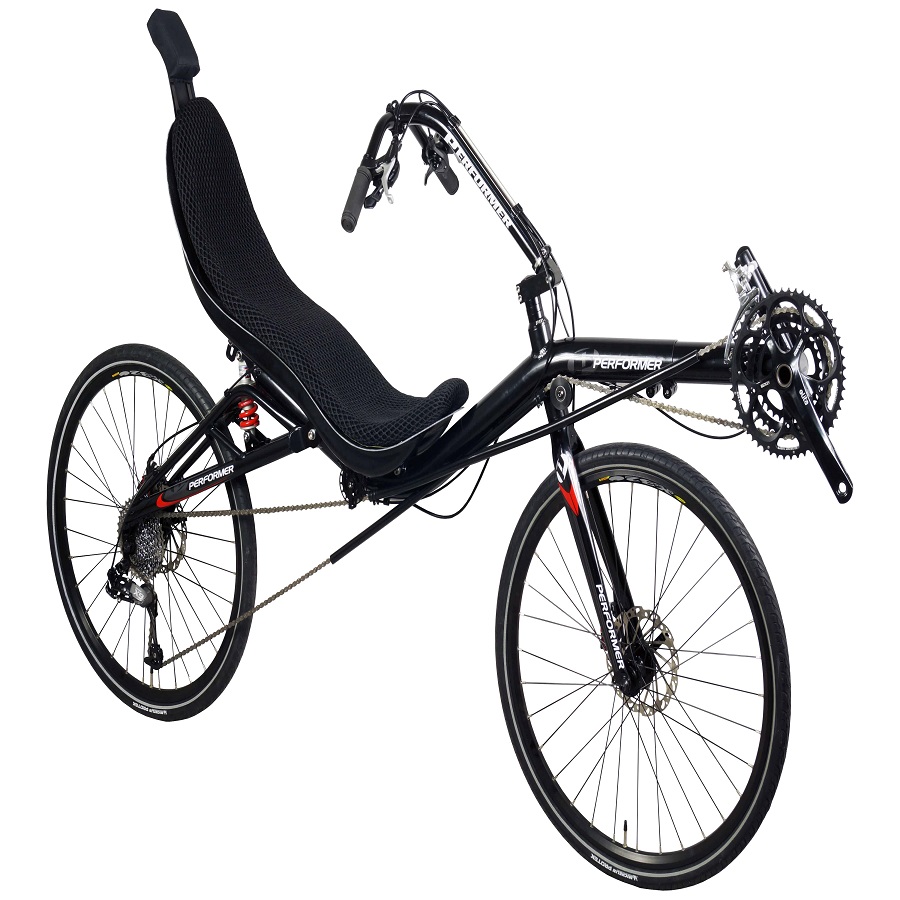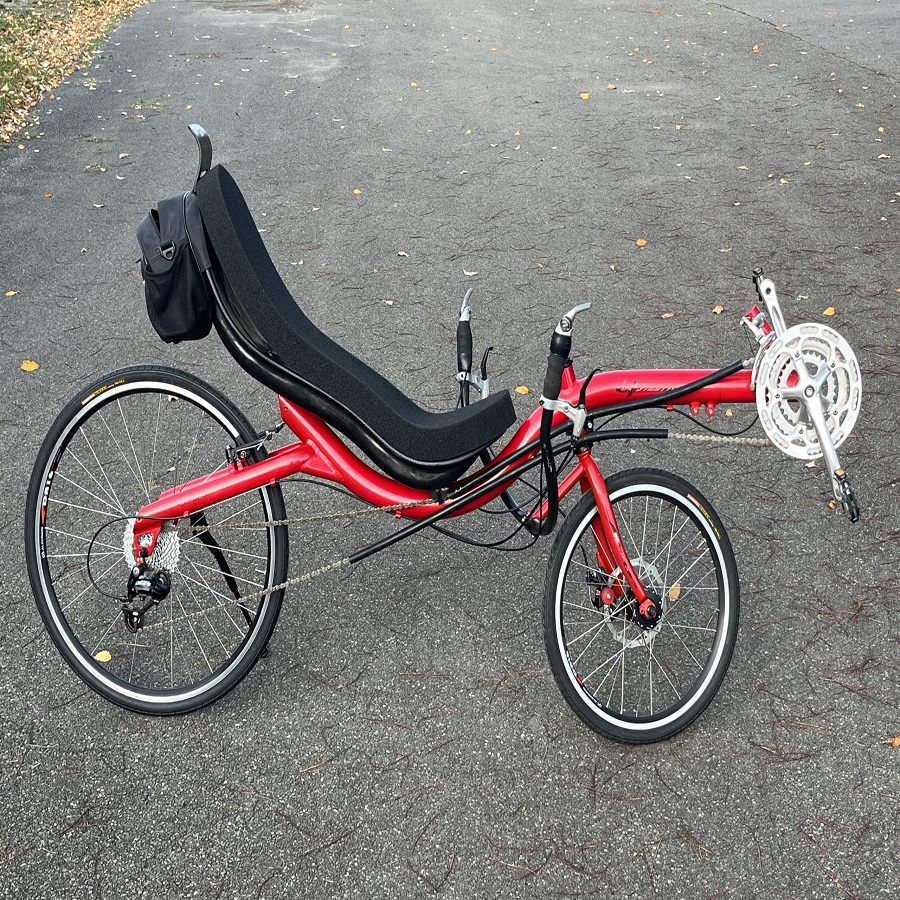Introduction
Recumbent motorcycle, a niche segment in the world of two-wheelers, offer a unique blend of comfort, speed, and efficiency that deviates from the traditional upright riding position. These innovative vehicles challenge conventional motorcycle design by placing the rider in a laid-back position with the legs stretched forward, often supported by a comfortable seat and backrest. This alternative design not only alters the riding experience but also brings forth several advantages over their conventional counterparts. Let’s delve into the fascinating universe of recumbent motorcycles to understand how they redefine comfort, enable higher speeds, and promise enhanced efficiency.
Recumbent motorcycles, with their unconventional design and promise of improved comfort and aerodynamics, have long been a subject of fascination for both motorcycle enthusiasts and innovators in the transportation industry. These bikes defy the traditional upright riding position, offering riders a laid-back experience that could very well shape the future of two-wheeled travel. In this exploration, we delve into the world of recumbent motorcycle designs, understanding their unique features, advantages, and the potential they hold for transforming the way we commute and ride.
Comfort Redefined
The most immediate and noticeable benefit of recumbent motorcycles is the enhanced comfort they provide. Traditional motorcycles require riders to maintain an upright or slightly leaned-forward posture, which can be tiring, especially during long rides. Recumbent designs, however, support the rider’s back and distribute body weight more evenly across the seating area. This reduces pressure points, alleviating back, neck, and wrist pain commonly associated with prolonged periods on a standard motorcycle.
Moreover, the reclined position allows for natural alignment of the spine, promoting better blood circulation and reducing fatigue. Riders with physical limitations or those seeking a more relaxed journey find recumbent motorcycles particularly appealing due to their ergonomic benefits.
Speed and Aerodynamics
One of the surprising aspects of recumbent motorcycles is their potential for speed. The aerodynamic advantage of a recumbent design cannot be overstated. With a lower profile and reduced wind resistance compared to an upright motorcycle, recumbents can achieve higher speeds with less power. The rider’s body, being closer to the ground and shielded by the fairing (if equipped), encounters less air resistance, translating to improved performance and potentially increased fuel efficiency on long runs.
In fact, recumbent motorcycles have set records in speed competitions, demonstrating their capability to surpass conventional motorcycles in terms of velocity. This is particularly evident in streamlined models designed specifically for speed trials, where they can reach astonishing velocities that challenge the boundaries of what’s possible on two wheels.
Efficiency and Eco-Friendliness
Efficiency is another hallmark of recumbent motorcycles. Due to their aerodynamic superiority, these vehicles often require less energy to maintain speed, which directly translates to improved fuel economy or extended range for electric models. In an era where sustainability is paramount, this efficiency gain is a significant advantage, making recumbent motorcycles an attractive option for eco-conscious riders.
Electric recumbent motorcycles, in particular, showcase the full potential of this design. With batteries and electric motors that can be more efficiently integrated into the low-profile frame, these vehicles can deliver impressive ranges without compromising performance. They embody the future of green mobility, combining the thrill of motorcycling with a reduced carbon footprint.
 Challenges and Considerations
Challenges and Considerations
Despite their numerous advantages, recumbent motorcycles face certain challenges and considerations. Visibility can be an issue due to the lower riding position, requiring heightened awareness and the use of mirrors or cameras for increased safety. Maneuverability, especially at low speeds and in tight spaces, may also differ from traditional motorcycles, necessitating some adjustment time for new riders.
Furthermore, the unique design might limit aftermarket customization options and availability of spare parts, although this is improving as the popularity of recumbent motorcycles grows. Lastly, the cost can be a barrier, with specialized components and limited production numbers often resulting in higher price tags compared to conventional motorcycles.
Understanding Recumbent Motorcycles
At its core, a recumbent motorcycle positions the rider in a reclined position, with the feet forward and supported by a set of footrests or pedals, akin to a reclining chair. This design starkly contrasts with conventional motorcycles where riders sit upright or lean forward onto the fuel tank. The rider’s back is supported by a full seat, often with a backrest, which significantly reduces strain on the neck, back, and wrists, making long rides more comfortable.
Aerodynamic Advantages
One of the most compelling arguments for recumbent motorcycles is their superior aerodynamics. By lowering the rider’s profile and reducing wind resistance, these bikes can achieve higher speeds with less power compared to traditional motorcycles. This not only translates to better fuel efficiency but also opens up possibilities for increased range in electric models, a crucial factor as the world shifts towards sustainable mobility solutions.
Enhanced Safety
Safety is another aspect where recumbent motorcycles potentially excel. The lower center of gravity offers better stability, reducing the risk of tipping over at low speeds or during emergency braking. Furthermore, in the event of an accident, the rider’s body is less exposed, with the backrest and seat providing additional protection. However, it’s important to note that visibility issues—given the unusual riding position—may pose new safety challenges that need addressing through innovative design and technology.
Technological Innovations
The evolution of recumbent motorcycle designs is closely intertwined with technological advancements. Materials like carbon fiber and lightweight alloys are being employed to keep weight down while maintaining structural integrity. Additionally, integration with smart technologies such as advanced navigation systems, adaptive cruise control, and collision avoidance systems can further enhance the safety and riding experience.
 Market Acceptance and Challenges
Market Acceptance and Challenges
Despite their potential benefits, recumbent motorcycles face several hurdles on the path to mainstream adoption.
Moreover, regulatory frameworks might need adjustments to accommodate these new vehicle types, including licensing requirements and safety standards. As with any emerging technology, initial costs can be high, deterring some potential buyers until economies of scale kick in.
The Future Outlook
Looking ahead, recumbent motorcycles have the potential to carve out a niche within the broader motorcycle market, especially among riders seeking comfort, efficiency, and innovation. They could particularly appeal to commuters, touring enthusiasts, and those with specific physical needs that traditional motorcycles don’t adequately address.
For recumbents to become a significant force in the future of two-wheeled travel, manufacturers will need to continue refining designs, addressing safety concerns, and demonstrating clear value propositions over conventional alternatives. Collaborative efforts between industry players, regulators, and consumer groups will be vital in fostering acceptance and driving advancements in this exciting realm of motorcycle engineering.
Conclusion
Recumbent motorcycles represent a fascinating frontier in personal transportation, offering unparalleled comfort, impressive speed capabilities, and heightened efficiency. Their aerodynamic design not only enhances performance but also contributes to a more sustainable future of motorcycling. While they present a different set of challenges and require adaptation from riders, the rewards—be it the rush of speed, the satisfaction of efficiency, or simply the joy of a comfortable ride—are undeniable. As technology advances and awareness grows, we can expect to see more innovations and wider acceptance of recumbent motorcycles, further enriching the world of two-wheeled adventures.
While recumbent motorcycles may not replace conventional motorcycles entirely, they certainly hold the key to expanding the boundaries of what two-wheeled travel can be, offering a tantalizing glimpse into a future where comfort, efficiency, and innovation coexist harmoniously on the open road.
Leave a Reply